This post contains affiliate links, which means I may earn a commission if you purchase through those links (at no extra cost to you).
Learn How to Make Ceviche from any fish or seafood through a process called denaturation. Then combine your zesty fresh fish with citrusy vegetables and your favorite toppings, like hot sauce and avocado, for the ultimate Latin American appetizer.
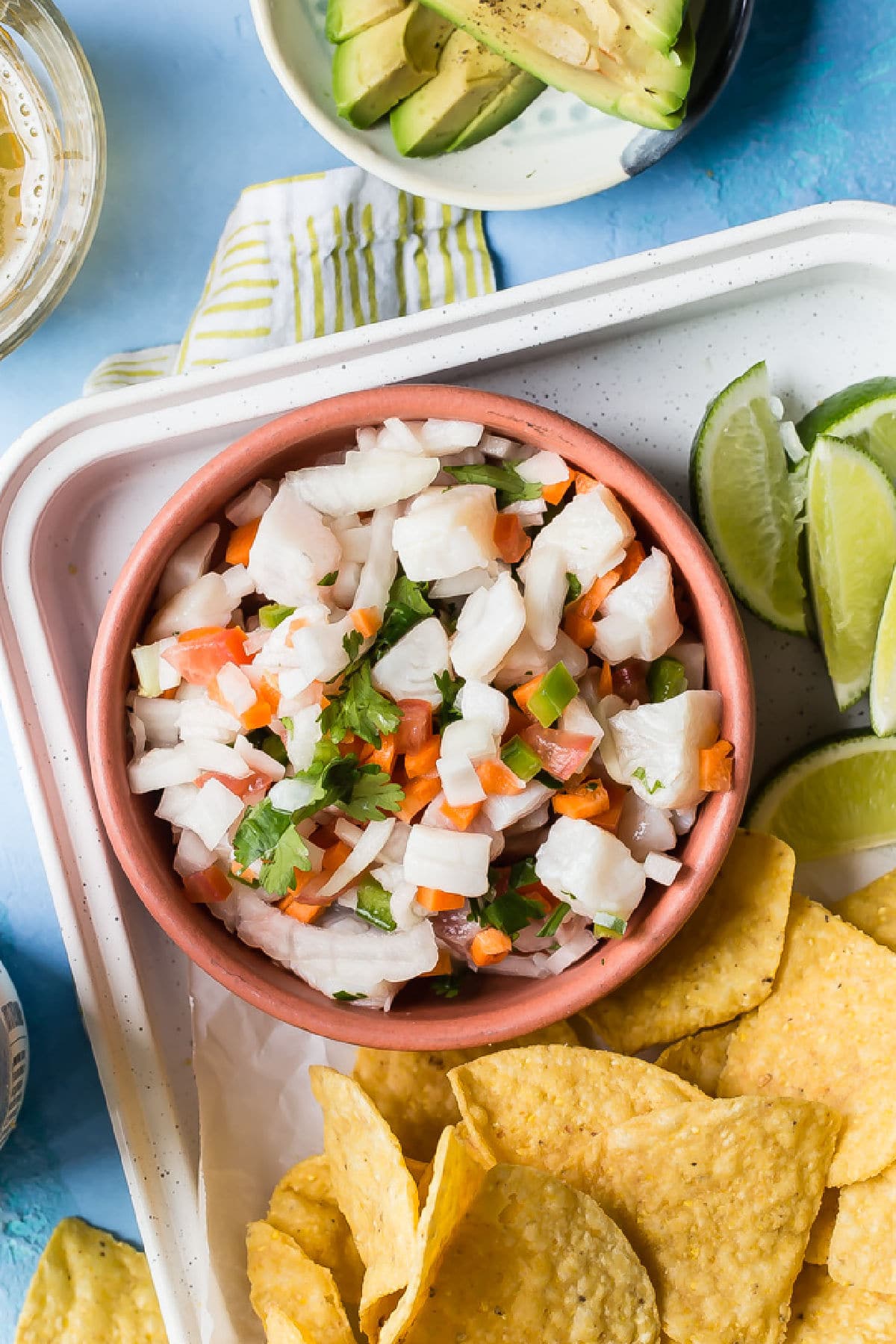
Meggan’s notes
This Ceviche recipe is an authentic take from Aguascalientes in the heart of Mexico. As a classically-trained chef, I love to travel to learn new recipes, so I went to the town of San José de Gracia and made ceviche with the locals. Then I brought back their exact recipe to share (my husband is from there, so this is his family recipe).
Ceviche is different wherever you go, but this is the best version I’ve had. The secret to my favorite ceviche is carrots. Most Mexican ceviche recipes include fish or shrimp, cucumbers, tomatoes, and chili peppers, but this is the only version I’ve seen with carrots. They taste great and they stay crunchy even in ceviche, even overnight, even after 2 days.
My friends in San José enjoy their ceviche with saltine crackers, tostadas, or tortilla chips, and they always serve plenty of mayonnaise and Valentine hot sauce on the side. They also prepare a separate bowl of spicy habañero chiles on the side; adults add them to taste, and kids avoid them at all costs. At least until they’re older!
Table of Contents
Best Ceviche Ingredients
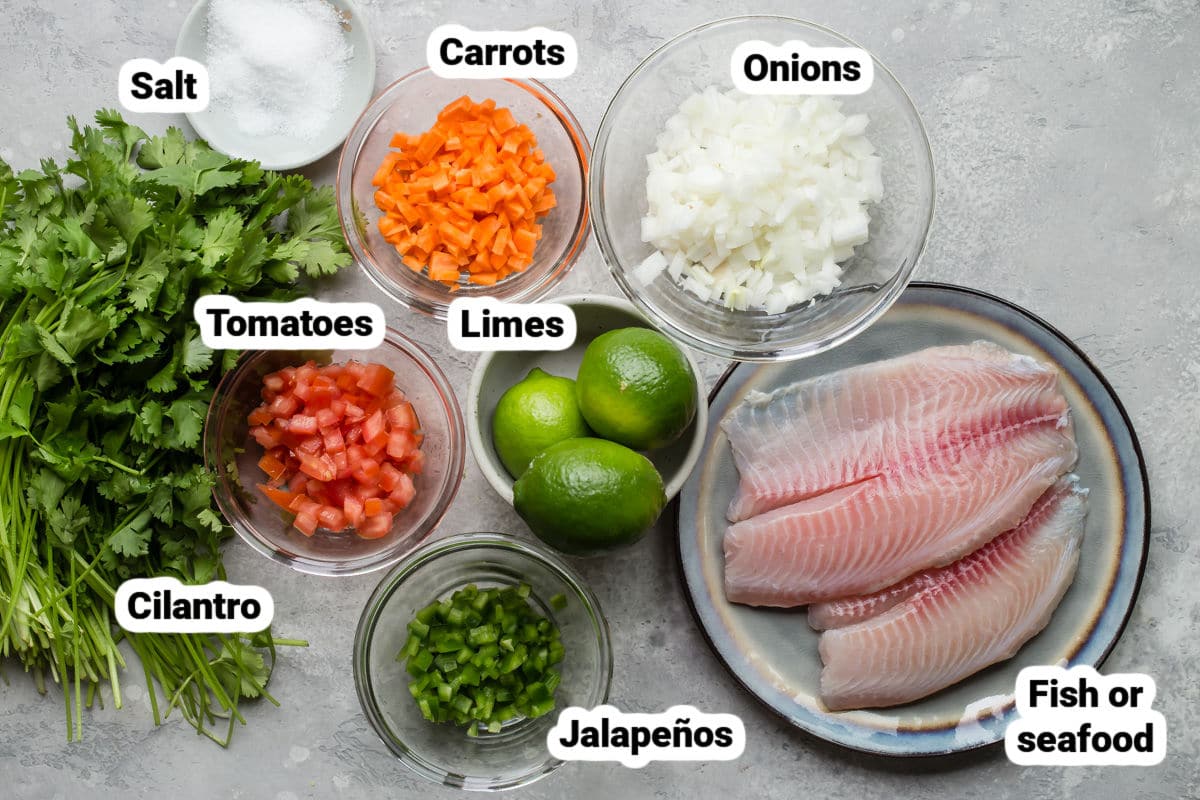
At a Glance: Here is a quick snapshot of what ingredients are in this recipe.
Please see the recipe card below for specific quantities.
- Fish or seafood: Tilapia, salmon, black, white, or striped sea bass, halibut, flounder, snapper, grouper, sole, sea trout, yellowtail, shrimp, squid, scallops, and octopus are all great choices. Be sure to remove any skin before cutting. Thaw in a bowl or on a tray overnight in the refrigerator. For quicker thawing, thaw in a bowl of cold (not warm) water. Turn the faucet on and let a thin trickle of cold water run into the bowl, letting the excess water overflow out of the bowl and down the drain.
- Citrus juice: The acid that “cooks” the fish. Lime juice is the most common in Mexico (lemons are not usually available there), but lemon, grapefruit, and orange juice are all great options.
- Onion: White onion is the most common in Mexico, but any color will work in this recipe.
- Carrots: I don’t see carrots in most ceviche recipes on the Internet, but that’s how they make it in Aguascalientes. And it’s great!
- Tomatoes: For a small, tight dice, use Roma tomatoes (they are less juicy) and remove the tomato seeds before dicing.
- Jalapeños: Remove the seeds for less heat. At family gatherings in Mexico, they prepare a separate bowl of spicy chiles (like serrano and habañero chiles) so the adults can add those to taste and the kids don’t have to suffer.
- Cilantro: Cut off the main batch of stems at the bottom of the bunch, then cut up the remaining stems along with the leaves. Please omit if you hate cilantro (parsley or chives are good substitutes).
- Salt: I add some to the dish but you can always pass it separately.
- Toppings: Mayonnaise, hot sauce, and sliced avocado are the most common toppings. Serve on crunchy tostadas, with tortilla chips, or with saltine crackers (Saladitas are a popular brand of cracker in Mexico that I’ve also found in Los Angeles grocery stores).
Best Fish for Ceviche
Choose high-quality fresh or commercially frozen fish and seafood. I like firm, white-fleshed fishes with a mild flavor such as tilapia, sea bass, halibut, cod, and snapper.
Some recipes caution against using fatty cuts like salmon, but if you love salmon, you’ll love it in ceviche. Just don’t let it denaturate beyond the time limit or it may get mushy.
How to Make Ceviche
- To break down large pieces of fish for ceviche, first cut each filet into strips about 2 inches wide, rinsing your knife in cold water between cuts. Holding your knife at a 45-degree angle and following the muscle fibers of the fish, slice the fish into chunks. Continue cutting the fish into 1/2-inch pieces for this recipe.
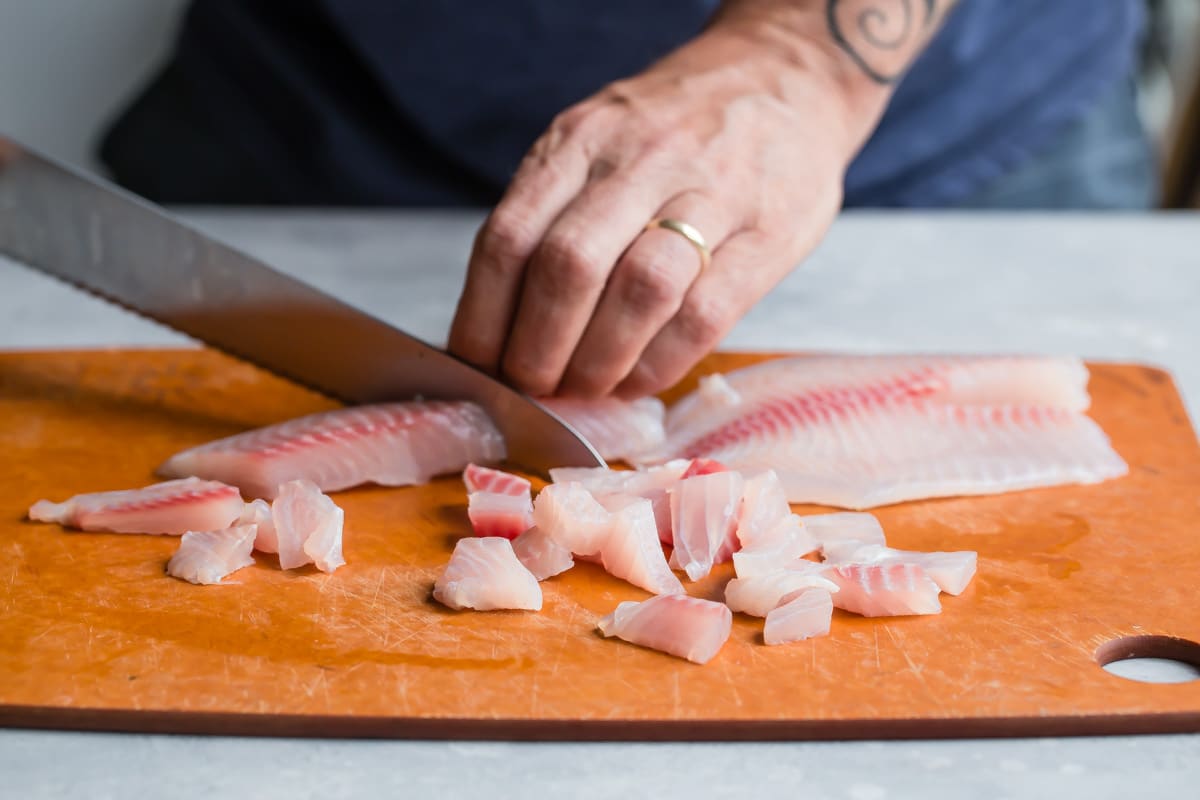
- In a medium glass or stainless-steel bowl, add fish or seafood and citrus juice and toss to coat.
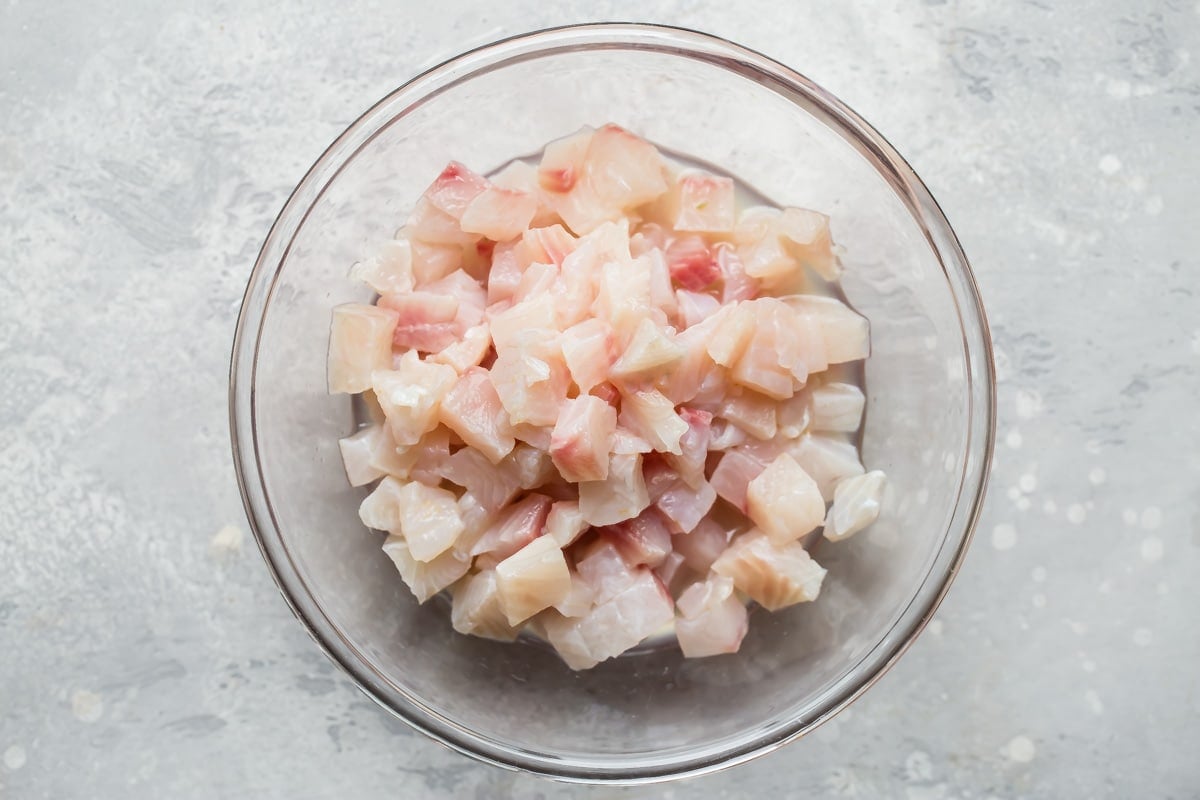
- Cover and refrigerate until the fish is opaque and “cooked” through, about 4 hours (if using cooked shrimp, omit this step).
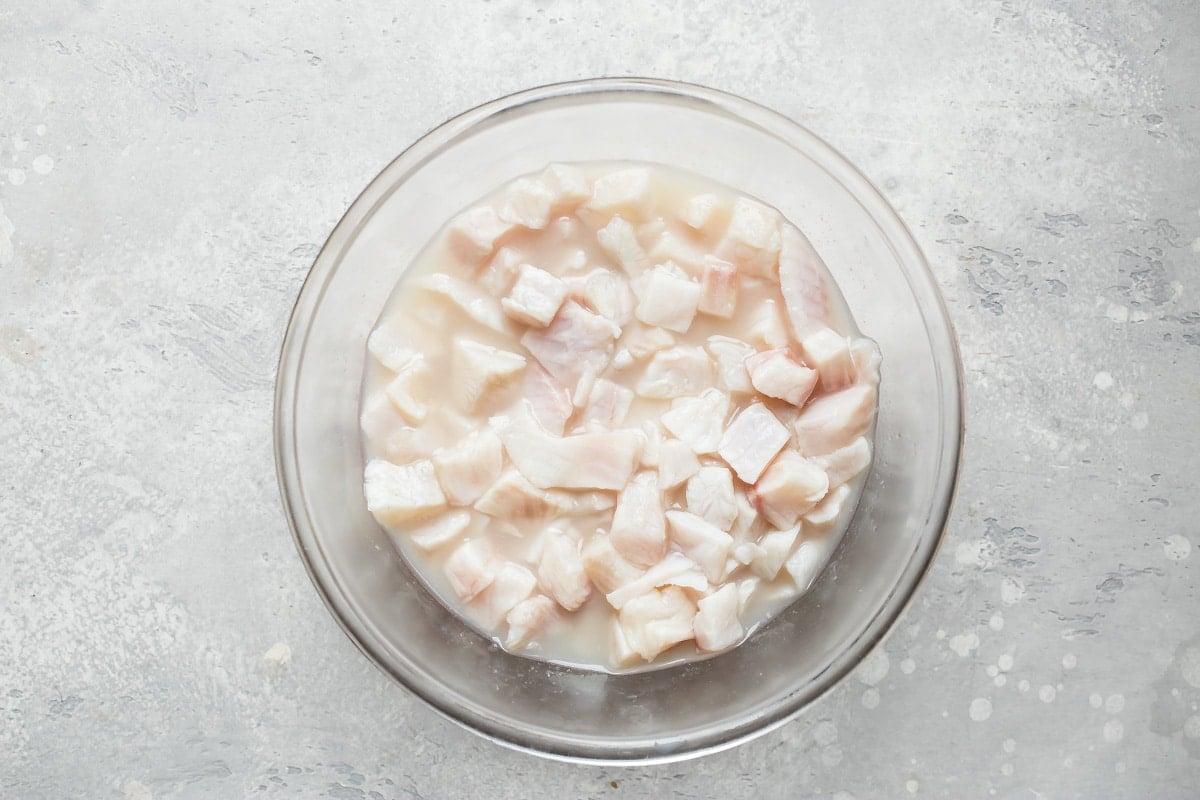
- Drain off and discard excess citrus juice. Add onion, carrots, tomatoes, jalapeños, and cilantro and toss until evenly coated. Season to taste with salt (I like ½ teaspoon) and more fresh citrus juice if desired. Serve with hot sauce or mayonnaise and tostadas, tortilla chips, or saltine crackers.
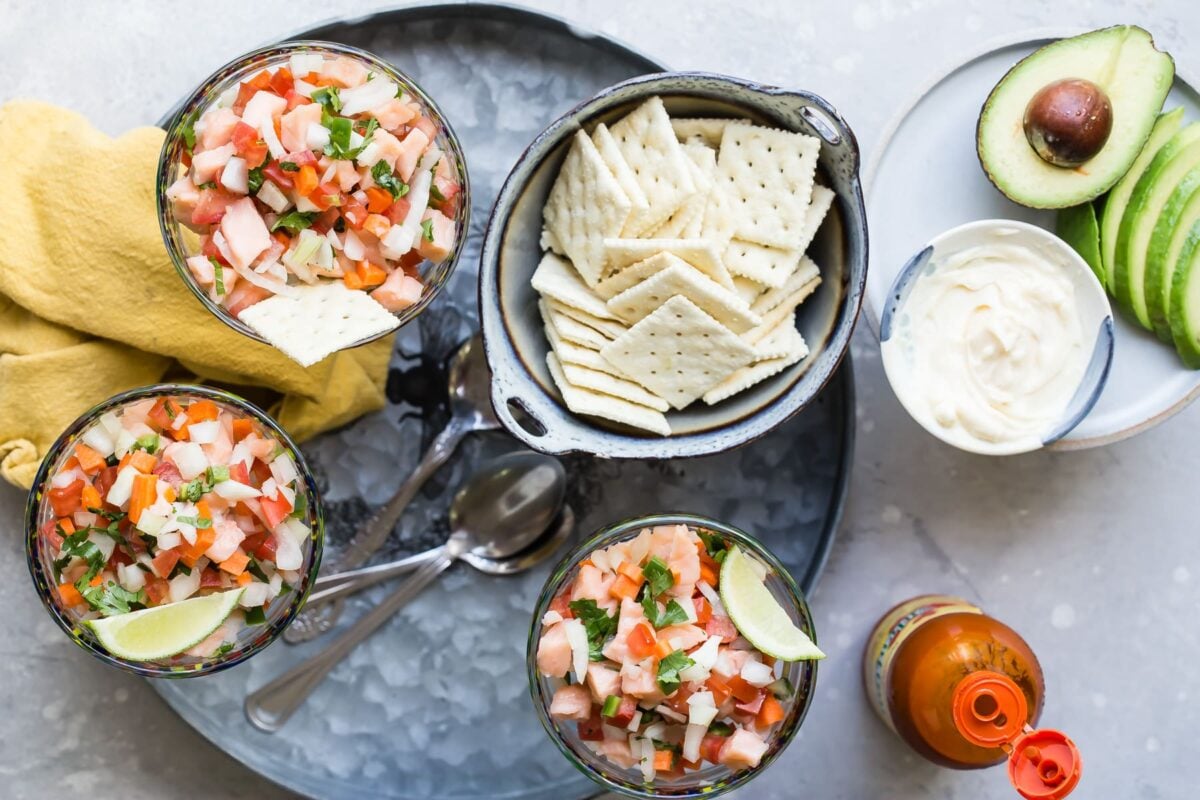
Recipe tips and variations
- Safety: Citrus juice does not kill bacteria or parasites in fish (neither will your home freezer), so choose commercially-frozen or high-quality fresh fish for ceviche. Cod, swordfish, and many freshwater fish are prone to parasites.
- Yield: This recipe will make about 4 cups ceviche.
- Storage: Store leftovers covered in the refrigerator for 1 day. Ceviche is best enjoyed the day you make it.
- Denaturation: The technical term for the reaction between the citrus juice acid and the proteins in the muscle fibers of the fish or seafood.
- Avocado: Mixed in or scattered on top, avocado tempers the heat and a creamy texture to ceviche. Guacamole is a great option, too.
- More mix-ins: Get creative with jicama, cucumber, pineapple, or mango.
- Nutrition information: This will vary depending on the type of seafood used. The label below is for Tilapia Ceviche (no condiments, chips, or crackers). For comparison, Salmon Ceviche is approximately 200 calories per 1-cup serving and Shrimp Ceviche is approximately 140 calories per 1-cup serving.
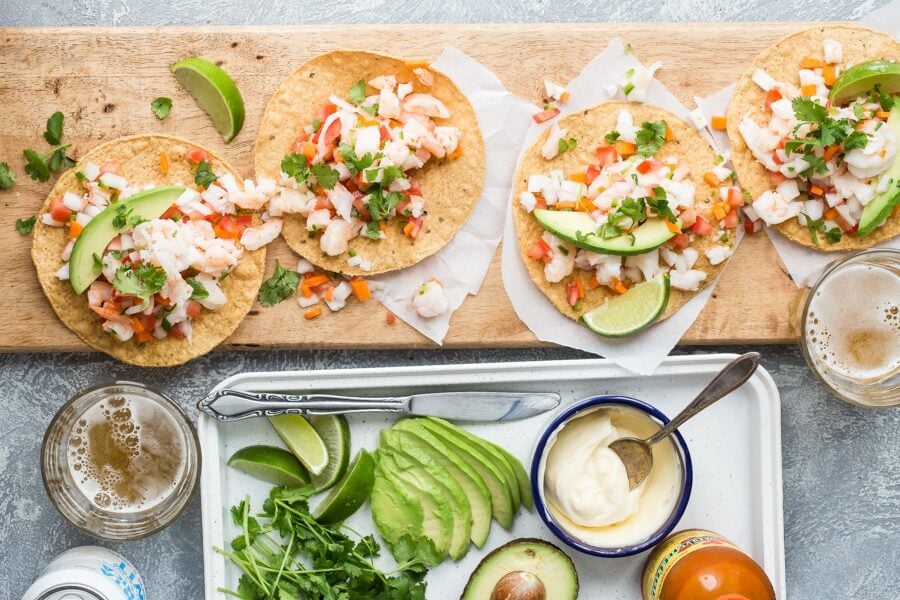
Homemade Ceviche FAQs
For the best flavor, and to make sure the ceviche is properly “cooked” through denaturation, let it sit for at least 4 hours. A lot of recipes suggest 5 to 20 minutes, but those versions require sashimi-grade fish such as what you would get at a sushi restaurant.
Many Latin American countries have their own versions of ceviche including Peru, Mexico, and Ecuador. Within those countries, too, there are region-specific versions. Some variations are defined by the seafood they feature (such as squid, crab, or black clams), unique fruits and vegetables (mango, hearts of palm, or mushrooms) and flavors (garlic, ginger, or fish broth).
You can do as little as 30 minutes if you don’t mind a partially-raw shrimp ceviche. For shrimp that are fully “cooked,” let them sit in the citrus juice for at least 4 hours. Some cooks just use cooked shrimp and it’s ready to go immediately, but it won’t have the same deep flavor.
Yes, just thaw the shrimp before using. Most shrimp has been previously frozen even if it appears “fresh” at your local seafood counter. It’s the best way to keep shrimp, and other seafood, safe while preserving its flavor.
More Mexican recipes
Mexican Recipes
Chicken Tinga
Mexican Recipes
Recipe for Carne Asada Meat
Mexican Recipes
Tacos Al Pastor Recipe
Stews and Soups
How to Make Pozole Rojo Soup
Join Us
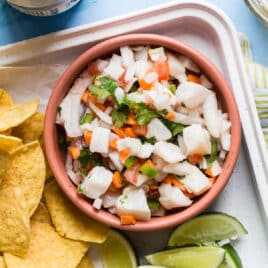
Fish Ceviche Recipe
Ingredients
- 1 pound fish or seafood, thawed (see note 1)
- 1 cup citrus juice plus more for serving (see note 2)
- 1 medium onion peeled and finely diced (about 1 cup)
- 1 large carrot peeled and finely chopped (about ½ cup)
- 1-2 Roma tomatoes seeded and finely chopped (about ½ cup)
- 1-2 jalapeño peppers stemmed, seeded (if desired) and minced (see note 3)
- 1 bunch fresh cilantro stems removed and minced (see note 4)
- Salt
- Hot sauce or mayonnaise and tortilla chips, tostadas, or saltine crackers, for serving
Instructions
- To break down large pieces of fish for ceviche, first cut each filet into strips about 2 inches wide, rinsing your knife in cold water between cuts. Holding your knife at a 45-degree angle and following the muscle fibers of the fish, slice the fish into chunks. Continue cutting the fish into 1/2-inch pieces for this recipe.
- In a medium glass or stainless-steel bowl, add fish or seafood and citrus juice and toss to coat. Cover and refrigerate until the fish is opaque and "cooked" through, about 4 hours (if using cooked shrimp, omit this step).
- Drain off and discard excess citrus juice. Add onion, carrots, tomatoes, jalapeños, and cilantro and toss until evenly coated. Season to taste with salt (I like ½ teaspoon) and more fresh citrus juice if desired. Serve with hot sauce or mayonnaise and tostadas, tortilla chips, or saltine crackers.
Recipe Video
Notes
- Fish or seafood: Tilapia, salmon, black, white, or striped sea bass, halibut, flounder, snapper, grouper, sole, sea trout, yellowtail, shrimp, squid, scallops, and octopus are all great choices. Be sure to remove any skin before cutting. Thaw in a bowl or on a tray overnight in the refrigerator. For quicker thawing, thaw in a bowl of cold (not warm) water. Turn the faucet on and let a thin trickle of cold water run into the bowl, letting the excess water overflow out of the bowl and down the drain.
- Citrus juice: The acid that “cooks” the fish. Lime juice is the most common in Mexico (lemons are not usually available there), but lemon, grapefruit, and orange juice are all great options.
- Jalapeños: Remove the seeds for less heat. At family gatherings in Mexico, they prepare a separate bowl of spicy chiles (like serrano and habañero chiles) so the adults can add those to taste and the kids don’t have to suffer.
- Cilantro: Cut off the main batch of stems at the bottom of the bunch, then cut up the remaining stems along with the leaves. Please omit if you hate cilantro (parsley or chives are good substitutes).
- Safety: Citrus juice does not kill bacteria or parasites in fish (neither will your home freezer), so choose commercially-frozen or high-quality fresh fish for ceviche. Cod, swordfish, and many freshwater fish are prone to parasites.
- Yield: This recipe will make about 4 c. ceviche.
- Storage: Store leftovers covered in the refrigerator for 1 day. Ceviche is best enjoyed the day you make it.
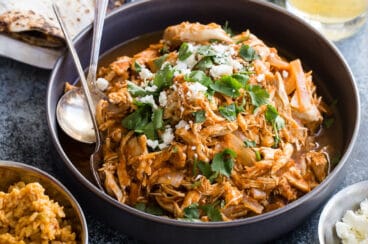
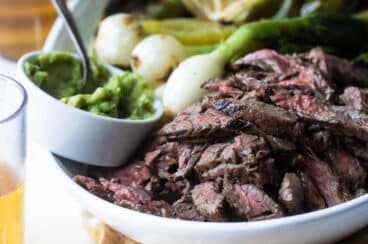
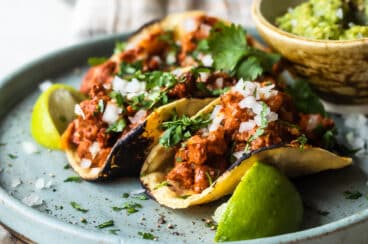

Traditional ceviche does not have tomatoes or carrots. Only lime juice should be used with salt to boost the acidity. Habaneros (or aji chombo) have a nicer flavor profile and slow warmth vs the nothingness of jalapenos. The fish should be firm and fully cured by the salt and lime (at least 24 hours). *Never* use frozen/previously frozen fish – the texture will be mushy. It can keep safely in the fridge for a week. (yes, I am a ceviche snob and use a recipe that has been in my family for 200+ years)
Hi Mike, in my post I share that this is how it’s made in San José de Gracia in Aguascalientes, Mexico. I also chat about how it’s different everywhere you go. Thanks for your input on ceviche. Take care! – Meggan
Thanks for this easy instruction. So easy and so tasty!